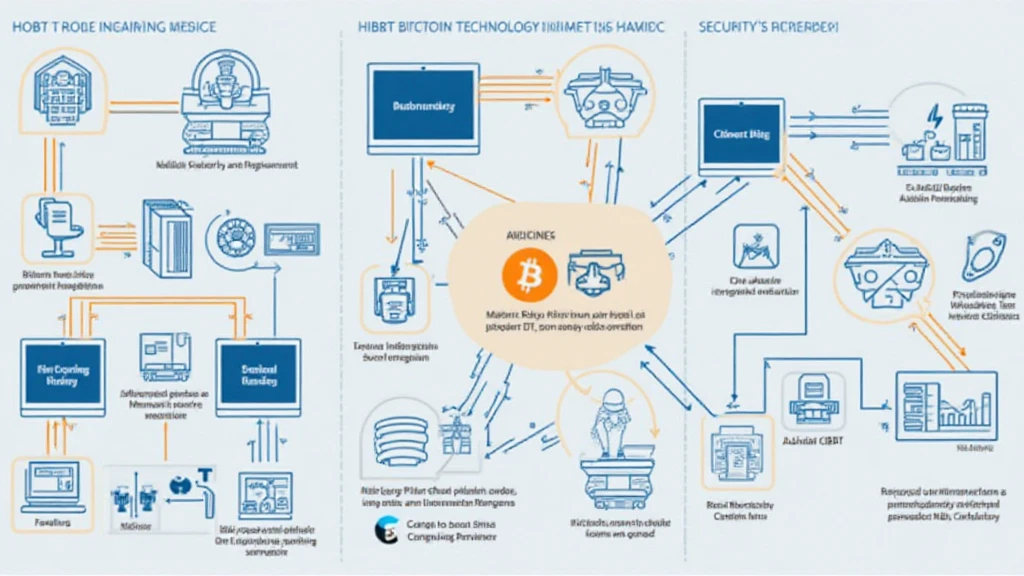Vietnam Crypto Stablecoin Adoption: A Promising Future
As we venture deeper into 2025, the world of cryptocurrency has become more complex and intriguing. With over $4.1 billion lost to decentralized finance (DeFi) hacks in the last year, the need for secure, stable financial instruments is more evident than ever. This brings us to the topic of this article—Vietnam crypto stablecoin adoption. In this article, we’ll explore the current landscape, the factors driving adoption, potential challenges, and what the future holds for stablecoins in Vietnam.
The Landscape of Cryptocurrency in Vietnam
Vietnam has shown significant growth in the adoption of cryptocurrency. According to a recent study by Chainalysis, Vietnam ranks among the top 10 countries in terms of crypto adoption worldwide. This surge can be attributed to several factors:
- Increase in Internet Access: With an Internet penetration rate of over 70%, more people are entering the crypto space.
- Youth Demographics: A large portion of the Vietnamese population is young, tech-savvy, and open to adopting new technologies.
- Government Initiatives: The Vietnamese government is gradually recognizing the potential of blockchain technology.
However, the most significant driver of crypto adoption in Vietnam has been the recent interest in stablecoins.

What is a Stablecoin?
Before diving deeper, let’s clarify what a stablecoin is. A stablecoin is a type of cryptocurrency designed to maintain a stable value by pegging it to a reserve asset, such as the US dollar or gold. This stability makes stablecoins less volatile compared to typical cryptocurrencies like Bitcoin or Ethereum.
This characteristic is imperative, especially in emerging markets like Vietnam, where economic instability can hinder digital asset adoption.
Reasons for Increasing Stablecoin Adoption in Vietnam
1. Financial Inclusion: Many Vietnamese citizens lack access to traditional banking services. Stablecoins can provide a decentralized alternative for transactions and savings.
2. Inflation Hedge: With the Vietnamese dong facing inflationary pressures, stablecoins present an opportunity to preserve value.
3. Ease of International Transactions: Stablecoins facilitate quick and affordable remittances for Vietnamese workers abroad, avoiding the high fees associated with traditional money transfer services.
4. Smart Contracts and DeFi Applications: Stablecoins enable new financial products and services that leverage smart contract capabilities, providing more options for consumers.
Real-World Examples of Stablecoin Usage
Many local startups are now accepting stablecoins like USDT or USDC in their payment systems. For instance, platforms like Hibit.com allow Vietnamese users to trade stablecoins seamlessly, catering to an increasing demand.
Challenges to Adoption
Despite the promising outlook, there are several challenges that need to be addressed:
- Regulatory Uncertainty: Vietnam’s regulatory framework regarding cryptocurrencies is still emerging. Clear regulations concerning stablecoins would greatly enhance their adoption.
- Market Education: Many consumers and businesses still lack an understanding of stablecoins and how they can be utilized.
- Technological Barriers: Access to reliable and efficient blockchain infrastructure is critical for stablecoin operations, which can be a challenge in some regions.
Government’s Stance on Cryptocurrencies
The Vietnamese government has issued several regulations concerning cryptocurrencies. While they are cautious, they are not against the potential of blockchain technology. In 2025, it’s anticipated that regulations will become more clear, potentially fostering a supportive environment for stablecoin adoption.
Future Outlook for Stablecoins in Vietnam
Looking ahead, it is essential to consider how overly intertwined stablecoins and traditional finance might become. The convergence could allow for safer investments and wider crypto adoption. A prominent Vietnamese financial analyst notes, “By 2027, we expect stablecoins to be integrated into our everyday transactions, just as credit cards are today.”
The key to achieving this will lie in both technological advancements and the establishment of a robust regulatory framework that encourages innovation while protecting consumers.
Potential Use Cases for Stablecoins in Vietnam
- SMEs Financing: Stablecoins could play a pivotal role in simple crypto-backed loans for small and medium enterprises.
- Digital Remmissions: They could significantly lower costs for workers sending money back home.
- Peer-to-Peer Transactions: Simple payment solutions for everyday transactions could boost local economies.
Conclusion
As Vietnam’s economy continues to evolve, the potential for crypto stablecoin adoption is indeed promising. Though there are challenges to overcome, the benefits of stablecoins could provide a much-needed solution to many existing financial inefficiencies in Vietnam.
The future of stablecoin adoption in Vietnam largely depends on how regulatory frameworks evolve and whether consumers become more educated about blockchain technologies like “tiêu chuẩn an ninh blockchain”.
With increasing interest from both the public and private sectors, it’s clear that Vietnam is on the verge of embracing the full potential of cryptocurrencies. For all the budding investors and crypto enthusiasts in Vietnam, now might just be the right time to explore stablecoin options and how they can aid in financial growth.
If you want to learn more about crypto in Vietnam, visit Hibit.com for the latest trends and insights. Not financial advice. Consult local regulators for compliance.
Author: Dr. Minh Tran, a blockchain expert with over 20 published papers and a significant role in auditing major fintech projects.





